peter ablinger - english texts
NOW!
Writings 1982-2021
translated from German by Meaghan Burke
> more

My material is not sound.
My material is audibility.
Like others who work with sound
set a sound then a pause
I set audibility then inaudibility.
Inaudibility can arise in different ways.
By quietness but also by loudness.
By too low tones and by too high tones.
By slowness but also by speed.
By too little happening but also by too much happening.
By too much closeness and by too much distance.
By too short durations and by too long durations.
By emptiness and by fullness.
It has to be added that the relation of audibility and inaudibility -in contrast to sound/pause- is in a way a transcending one. First, audibility and inaudibility are not even absolutely separated from each other in the idea but are linked by a "critical band". That is, there is a critical zone within which, somewhat differently for each, the transition from audibility to inaudibility happens. Secondly and more important, the relationship between audibility and inaudibility is not a polar, mutually exclusive one, but the change from audibility to inaudibility signifies a transition to ANOTHER state.
For example, exceeding a certain loudness becomes pain, exceeding a certain frequency becomes ultrasound, falling below a certain duration of a sound becomes a crack, exceeding a certain amount of information becomes chaos etc.

Once — I believe it was 1986, high summer — I came on something remarkable while on a walk through the fields East of Vienna near the Hungarian border and close to the birthplace of Haydn. The corn stood high and it was just before harvest. The hot summer east wind swept through the fields and suddenly I heard das Rauschen (noise/the sound). Although it was often explained to me, I can still never say how wheat and rye are different. But I heard the difference. I believe it was the first time I really heard outside an aesthetic circumstance (say, a concert). Something had happened. Before and after were categorically separated, had nothing more to do with each other. At least it appeared to me then that way. In hindsight I recognize/remember other comparable experiences that had to do with a jerking open of perception, but the walk through the corn fields was perhaps the most momentous. For one way or the other, it seems to me, all the pieces I’ve made since have to do with this experience. Even the pieces not dedicated to noise, or those played with traditional instruments, etc.
transl. by Bill Dietz
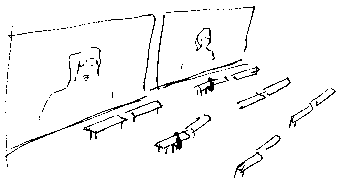
an essay by Peter Ablinger
written in 2003
generals about opera and musictheater,
seeing them as two anthithetic principles
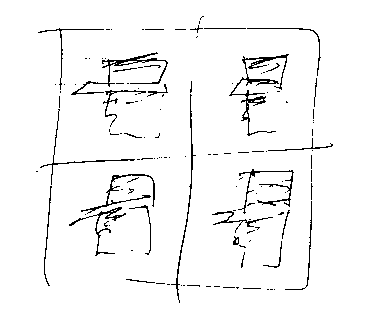
QUADRATUREN V (Squarings V) "MUSIC" for orchestra (1997-2000)
Quadraturen (Squarings) is the name I have given to a method that seeks to present in visual terms any type of recorded sound. It may be compared to the phenomenon of grain encountered in photographs. Frequency f and time t are used as co-ordinates for a screen comprising a number of small noise fields whose format may, for example, be 1 second (time) multiplied by 1 second (interval).
The first thoughts on how to carry out the technical realisation arose after encountering the whole tone filter of the Experimental Studio in Freiburg. This equipment has a "freeze function" that may be understood as a kind of spectral screen. An invitation by IEM Graz led to a number of happy encounters with the institute's personnel, including Robert Höldrich, Winfried Ritsch and Thomas Musil. At last, I had the opportunity to carry out my ideas. First, a semitone filter was constructed, one that allowed intervallic sizes to be varied at will. Then, the concept of temporal screening - in the sense of a series of more or less rapid static analyses - was developed for the entire sound spectrum. At the beginning of 1997 the first two-dimensional screening in real time became possible. During this time a name for our project was found; and by the end of that year the undertaking had broadened considerably.
At the moment (2000) the following may be considered as works in progress:
Quadraturen I "City portrait Graz" (2 versions) "Language is" - Preliminary studies in recorded form
Quadraturen II "Speeches of the 20th century" - Installation for 6 loudspeakers on tall platforms based on screened speeches by Hitler, Lenin, Kennedy, Fidel Castro, Gandhi and Martin Luther King
Quadraturen III "Reality" - Studies for player piano
Quadraturen IV "Self portrait with Berlin" - for ensemble and CD
Quadraturen V "Music" - for orchestra
The work Quadraturen V was largely developed with IEM Graz, Nader Mashayekhi and Thomas Musil, the last-mentioned party helping me create most of my music for some years now. When I die, someone is bound to accuse him of writing my pieces: it is true of course! But let me explain what he has composed... Quadraturen V is - in compositional terms - a machine that can write orchestral music. One simply inserts a cassette in one end, regardless of what recorded material it contains, and out of the other end of the machine emerge whole pages of printed score. I'm dreaming of course. But at least this very composition is not just made up of actual output, but also comprises the production process itself, from the conception and the transformation of data analysed in note values right down to a conductor's score and orchestral parts.
This production method may be understood as a reply to the orchestra. For the orchestra is an apparatus of reproduction, not one of production. In Quadraturen V reproduction has become the object of reproduction. An object squared screening original material in order to have it reproduced by orchestral instruments. Here we encounter no environmental din, no one language, it is music itself. Music, because there is just a vague chance that the original material may become sufficiently recognisable. The aim is to generate a kind of utopia between a place of purely sonic reality and musical reminiscence. It is utopian because that which does not ("ou") really exist is the location ("topos"). In any case it becomes possible to oscillate in an ideal way between listening and remembering via a kind of locus amoenus. The object in this case is the "Hymn" of the former German Democratic Republic, composed by Hanns Eisler. One verse at a time, the music is employed on ten occasions. The object must be well-known in order that it can be remembered.
Varying screen tempi in various constellations help the object become recognisable or less recognisable, according to the case. In contrast, the spectral screen remains constant, in 3/4 tones, i.e. eight notes to the octave. This is very close to the seven non-equidistant notes of the diatonic scale but far enough removed from it. This means, however, that by no means has everything been done in order to render the "original" recognisable. The aim is to have it disappear just as it comes into view. Hopefully there will be many listeners who read the programme note after the performance; for I would love to know just how many people there are who can recognise the "original", and can "hear out" (as psycho-acousticians put it) the content, without knowing previously what there is to be heard.
Extract from the programme of the Donaueschinger Musiktage 2000
Translation: Graham Lack
see also: english documentation of Quadraturen I-V
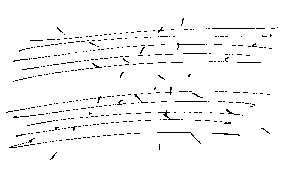
Christian Scheib:
PETER ABLINGER/STATIC'S MUSIC/NOISE INQUIRIES
1997/98

RECITATIVE AND ARIA
There're at base only 2 things: recitative and aria.
Or said differently: telling a story (narrative) and stopping time. Or put yet another way: the consecutive, the 1-after-the-other, and the simultaneous, the all-at-once.
The first in all these examples (the sequence, the succession) lets itself be reduced to a common denominator: language. The second does not; locked up with it is the indescribable, the unspeakable, the unutterable.
At times I think this second might also be called music.
No sense but hearing is so little tied to linearity. No other sense is so intensely capable of the simultaneous. And yet only rarely has music been prepared to make use of this capability. So often being only the obsequious servant of language. And is still.
We represent even the unutterable as speakable, even eternity after the model of language: as a 'stretch'. As the spinning apart from beginning and end. As thinning (an infinitely thin line), dilution.
I maintain the opposite. That eternity is everything at once. Is beginning (taking up, starting) and ending (stopping) now in this instant. Is the condensed, compressed, infinitely thick Now of this moment - in every moment. And the series of these moments again and again in every moment. Now and always.
All music simultaneously - this would be the waterfall, (white) Noise. All symphonies and operas at once, all the jazz solos ever played and that ever will be, every drum rhythm that can be beaten anywhere, every 'good night' song, even that which is sung and forgotten.
And yet what we perceive is not this Everything. What we hear is not really that Noise. We make a selection. We do what Debussy has said: I start with all the notes, keep out the ones I don't like, and let in the ones I do. This selection is our being.
When we stand at a waterfall, we perceive our thoughts and ideas, but not the waterfall itself; and if it succeeds in quieting our minds, letting our thoughts rest, we hear a melody in the din. Each his own!
What happens here is MADE by no one. It is instead through Noise, by It, MADE-POSSIBLE.
Putting the realization of this 'making-possible' of Being, this selection, this enabling, before 'making' exists as an attitude in the arts. Above all in pre-historic (pre-literate!) art: one doesn't 'create', one makes no 'works', one makes only an arrangement of what is (one sets up a circle of stones, one beats on a drum, one repeats the same syllable again and again) - an arrangement, an order, within which something can happen - through which some-thing can pass.
This idea is preserved in Eastern European icons. And at times finds itself in newer art.
Not counting(-on), registering, the DIFFERENT, but instead the SAME, through which the ONE can be manifest.
transl. by Bill Dietz

HEARING IS THE WORK
(from Catalogue "Sonoric Perspectives", Kunsthalle Rostock 2006)
Hearing is the work. The path of the sun from rising to setting describes a line on an open field in Rümlingen, Switzerland, on which 36 chairs and 6 bamboo plants are set up.
(Chairs, Bamboo, Sunrise, Sunset, 1996/97) The axes of listening and viewing are aligned with this path -- oriented along sunbeams. Chairs in the landscape become a part of a larger sculpture that combines motives of Land Art with those of conceptual composition. Hearing and observing, and the orienting of these two important senses in nature: this motive can be found in the most various of forms throughout the work of the composer and experimental sound artist Peter Ablinger (born in Austria, 1959) whenever the question is of extracting aesthetic qualities from the sounds of nature in the landscape. Indeed, the more unspecific the sound configuration presents itself, the greater seems the challenge to get to the bottom of it. This is particularly clear in Ablinger's musical works devoted to the phenomenon of white noise.
ON THE PHOTO PIECES OF THE SERIES SEEING AND HEARING
"In 1994 I was searching for a way to significantly increase sound density -- as in "Der Regen, das Glas, das Lachen" -- that would also allow me to continue collaborating with instrumentalists. "Significantly" meaning, I had a conception of sound comparable to noise: in which individual events would become colors. I was close to the solution that eventually led to the IEAOV pieces when I began taking photographs with extended exposure time and while moving the camera: movements in space that condensed into color spectra.
("Seeing and Hearing")
For me, these photos were in no way visual art. And yet, the soon to follow condensification pieces for instruments and electronics (IEAOV) were always more like huge colored plates than music -- huge colored plates that nevertheless, were composed for the concert hall... However, if in the beginning the photos were studies for the concert pieces, they later asserted themselves as an independent and self-sufficient series of works --which, to me, only make sense when I consider them as music: when I, so to speak, hear them -- or maybe better: when I must provide them with a further, additional sense, a sense where seeing has only a preparatory function and where hearing becomes and extra-physical process..."
(P.A. 11/02, engl. version edited by Bill Dietz)

RAIN, GLASS, LAUGHING
"Der Regen, das Glas, das Lachen" for 25 instrumentalists: this marks the juncture of a one tone piece and white noise. The constituent polymetric one tone piece takes 20 minutes to "glissando" once through the octave and in the process turns into an all tone piece, while the total sound passes in stages through 6 further layers of simultaneous sound until it arrives at a single level of white noise. The simultaneity of the graduation from coarsegraininess (tone) to fine-graininess (= more compactness, more noise) right down to the surface (white noise) is maintained - potentially - from start to finish. This means that what is played is extremely dense and a large part of the orientation is left to the listener. Over long periods he is left alone to listen in to the various levels of the piece, to find his way IN THE SOUND.
This process of listening in is an essential part of the piece itself, the actual event, the reason it Game into being. No-one is "forced" when listening to select or distinguish between the different levels when listening to the piece. Nor is THE SOUND of the piece made up of its individual levels. I would like to say, IT OCCURS beyond the levels, through the levels, and in the ears of the listener. This is where "melodies" are created which do not feature in any of the layers, but which for example begin with a sound in layer 6, immediately followed by one in layer 4 and then in 3, only to end in layer 5. One might say that the process of listening does not run "along" the axis of chronological time but takes place "across" time. Or that it expands instead of remaining on a line. In this sense, it is a "kind of spectralisation of attention". And as a listener I enjoy oscillating between the different forms of listening - including that of absence.
transl. Anne Durand and Mark Court
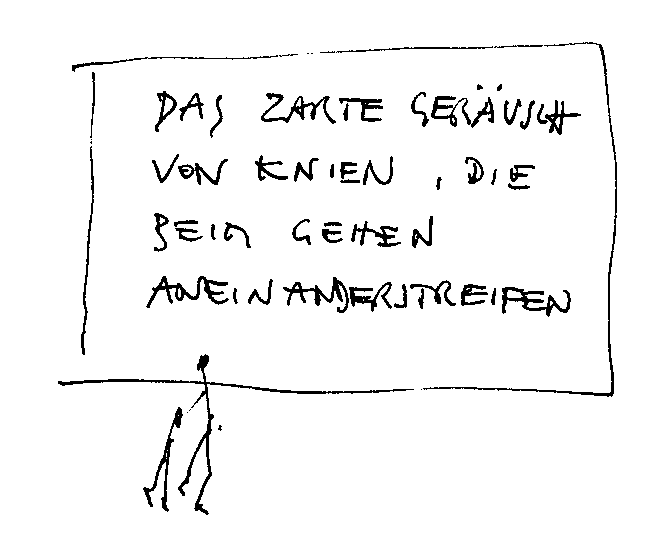
Anny Ballardini:
INTERVIEW PETER ABLINGER/VOICES AND PIANO
2004
as download-document:
Word 97 (25 KB)
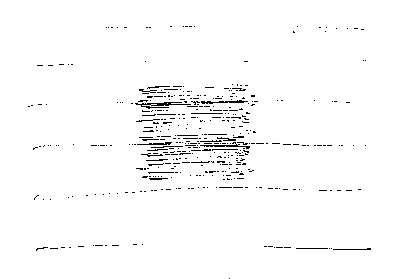
My material is not sound.
My material is audibility.
While others work with sound
perhaps set a sound and than a pause
I set audibility then inaudibility.
Inaudibility can arise through various means.
Through quietness but also through loudness.
Through too low notes and through too high notes.
Through slowness but also throuh swiftness.
Through too little occurring but also through too much occurring.
Through too much closeness and through too much distance.
Through too short durations and through too long durations.
Through emptiness and through fullness.
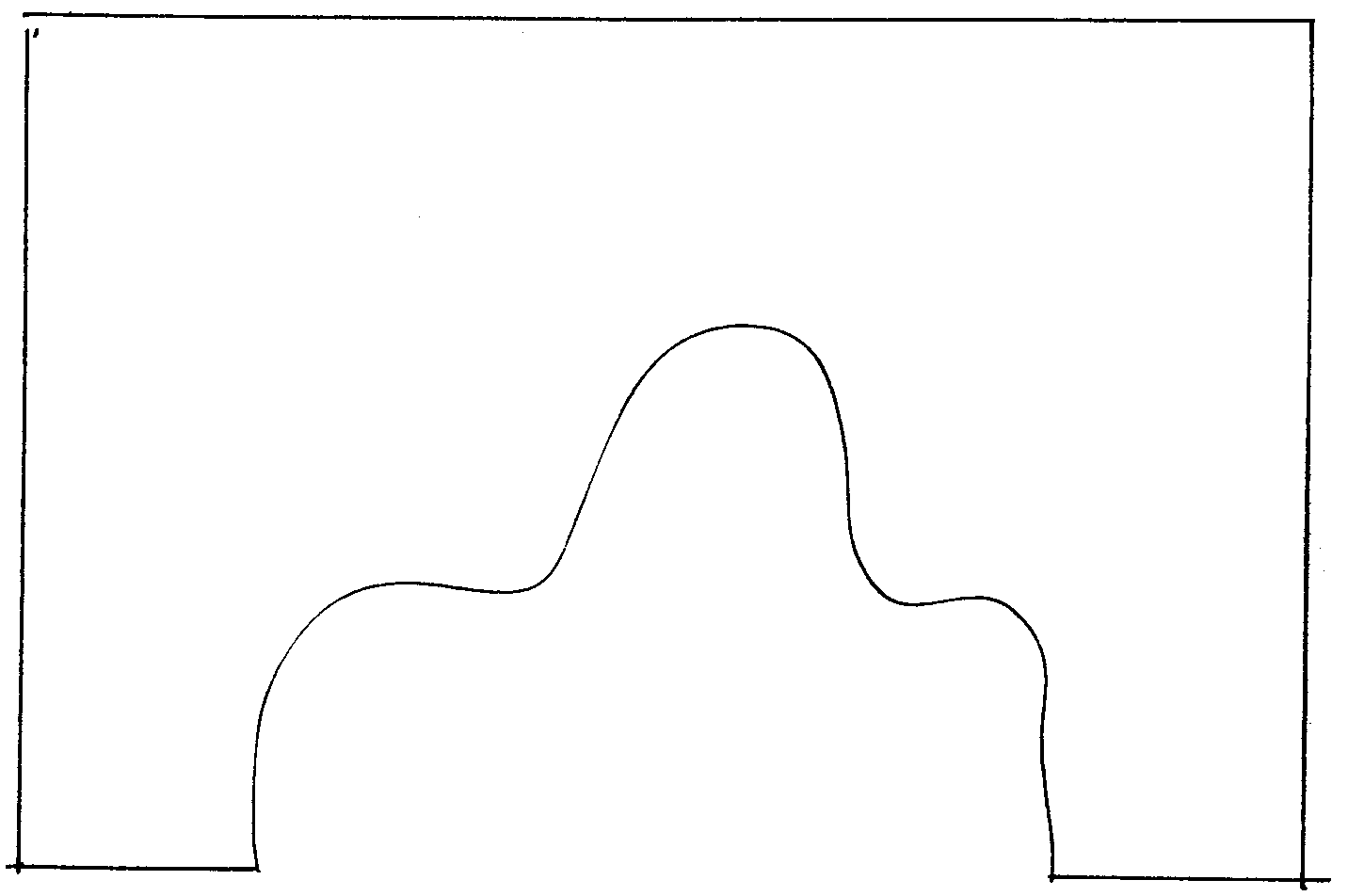
... Ablinger confirms, “I strive to make ‘perception’ perceptible... There is a way that one person can perceive sound as if they were two different people and that is what I try to achieve.”
(from: Atelier Neue Musik, "The New Conceptualism")
selection of text downloads in english translation below
NOW - the collected writings 1982-2021
- translation from German by Meaghan Burke -
are publihed at MusikTexte
MORE REALITY 2, texts 1988-1999 (pdf 21 KB)
MUSIC AND REALITY
, notes and sketches since 1979
INVERSE PERSPECTIVE, notes on perception, 1995
as download-document (pdf, 3 KB)
AUDIBILITY, the other of sound, 1996 (pdf, 2 KB)
PHILOSOPHY / THE OBSZENE, 1996/2019 (pdf 5kb)
TO LEAVE THE CONCERT HALL, Satie, Wagner, La Monte Young, ...
a note, 1997 (PDF, 2KB)
NO TRANSGRESSION, The change between concert- and installation pieces ...
a note, 1997 (4 KB)
ART AND CULTURE, an essay written in 2003
REALITY IS A SCANDAL, 2003 (pdf 2kb)
THE SUPERFLUOUS, 2008 (short excerpt)
LANDSCAPE WITH BEETHOVEN, 2009 (pdf 8kb)
THE ORCHESTRA, 2010 (pdf 8kb)
CONCERT AND CANVAS PAINTING, on standards and institutions,
notes from 1996 to 2013 (originally from: Klangforum Vienna Homepage, pdf 55kb)
CÉZANNE AND MUSIC, Perception and Perceptual Deficiencies / Music and Painting of the last 150 Years, 2012/13 (Ear|Wave|Event - Homepage)
NOISE AND NOISES, on a basic distinction in art and music, 2013
UNIFORM, 2016 (pdf 2kb)
HYPOTHESES ON A ROMANESQUE CHAPPEL, 2016 (pdf 361kb)
HARMONY AND ELECTRICITY, 2016 (pdf 4kb)
FREEDOM, 2016 (pdf 5kb)
MUSIC IS NOT TRUE, or: Why there can be no philosophy of music, 2016 (pdf 27kb)
NONSENSE, 2016/2017 (pdf 15kb)
THE OBJECT OF THE 21ST CENTURY, 2017 (pdf 14kb)
CAN ART BE RESEARCH, or:
"What we cannot describe is what makes us happy", 2017 (pdf 888kb)
THE UNSAID - on psychoanalysis and number symbolism, 2017 (pdf 24kb)
MUSIC IS MORE THAN SAYING, 2018 (pdf 6kb)
HAND AXE AND SMARTPHONE, Notes on the Hybrid, 2018-2023 (pdf 5kb)
PHILOSPHY - a note, 2020 (pdf 2kb)
CORONA BLOG, 2020
HEARING HOLES, on Socrates' allegory of the cave, 2020 (pdf 5kb)
MUSIC & THE OTHER, 2020 (pdf 8kb)
INVERTED PERSPECTIVE, a collection of materials 1990-2020
I CAN CONTINUE DANCING, 2021
THE UNDISTINGUISHED, 2019-2021 (pdf 91kb)
MUSIC ART, 2021 (pdf 2kb)
LAST LIE, 2021 (pdf 3kb)
DISIDENTIFICATION, 2021 (pdf 2kb)
AUGMENTED HEARING, 2013-2022 (pdf 229kb)
UNDER ZERO, Zero point figures and Deleuze's "Logic of Sense", 2022 (pdf 18kb)
TIME WILL COME, the crisis blog, 2022
THE ART THAT THINKS, artificial and artistic intelligence, 2024 (pdf 123kb)
THE NON-RESEARCHABLE, the im/possibility of artistic research, 2024 (pdf 15kb)

"General Strike of Art", see orig. german version at Golden Pudel Club, 'blurred edges', Hamburg 2022
texts in english by/with other authors:
Christian Scheib:
PETER ABLINGER/STATIC'S MUSIC/NOISE INQUIRIES
1997/98
Christian Scheib:
UNTITLED
On Peter Ablinger's Installations, 2003
Anny Ballardini:
INTERVIEW PETER ABLINGER/VOICES AND PIANO, 2004
as download-document:
pdf (8 KB)
Bill Dietz:
THE POSSIBILITY OF IMPROVISATION/THE IMPOSSIBILITY OF MUSIC, 2004
as download-document:
pdf (9 KB)
Trond Olav Reinholdtsen:
THE SOUNDS DO NOT INTEREST ME, an e-mail-interview with questions by the composer Trond Olav Reinholdtsen, 2005
as download-document:
pdf (13 KB)
Evan Johnson:
LIKE THE CLEAR BLUE SKY, 2006
about Peter Ablinger's "1-127", about scales and field recordings
G. Douglas Barrett:
MUSIC AND ITS OTHERS, 2007
as download-document:
PDF (98 KB)
Chiyoko Szlavnics:
TWO COMPOSERS' TALK
Unreleased and partial transcription of interviews held in July & November 2007
Chico Mello:
Between representation and self-reference
MIMESIS AND NOISE in Peter Ablinger, 2007
as download-document:
pdf (10 KB)
Chiyoko Szlavnics:
TEN QUESTIONS ABOUT "CITYOPERA", 2008
about Peter Ablinger's Cityopera Graz
G. Douglas Barrett:
BETWEEN NOISE AND LANGUAGE: The Sound Installations and Music of Peter Ablinger, 2009
as download-document:
PDF (876 KB)
La Tempestad:
QUESTIONNAIRE, 2010
as download-document:
PDF (4 KB)
G. Douglas Barrett:
WINDOW PIECE: Seeing and Hearing the Music of Peter Ablinger, 2010
as download-document:
pdf (52 KB)
Bill Dietz:
PETER ABLINGER SINGS WHITNEY HOUSTON, 2012
as download-document:
PDF (132 KB)
Sergio Bové:
BEYOND THE BOUNDARIES OF MUSIC,
some connections in Peter Ablinger’s work, 2013
as download-document:
PDF (114 KB)
Carlos Bermejo:
SEVEN PROJECTIONS
in the music of Peter Ablinger, 2013
as download-document:
PDF (25 KB)
WE ARE CLEAR LIKE A CRYSTAL
a conversation with composer Peter Ablinger, Seth Brodsky, Philip von Zweck, and Zachary Cahill, Portable Gray, Vol.3/No.1/2020, PDF (779 KB)
Marina Sudo:
LISTENING TO NOISE AND LISTENING TO ONESELF
An Analysis of Peter Ablinger’s Orgel und Rauschen, Musicologica Austriaca: Journal for Austrian Music Studies, 2020
Ismael G. Cabral:
an interview with Peter Ablinger fo the spanish music magazin "El compositor habla", 2021, PDF (18 KB)
some more pages in english translation:
OPERA WORKS: City Opera in 7 Acts
OPERA WORKS: Landscape Opera
Reference Pieces: pieces which exist only in its title; one can execute or visite, do or think them
Instruments and Electro-Acoustic Site-specific Verticalisation: variable versions, f.e. 1 day, 1 instrumentalist, 8 pieces, or a multiple of 8; 6 hours/day
California Score: Santa Monica Museum of the Arts, Dec 18 2001
"Seeing and Hearing" Music without Sounds: Photographs, Photo-series, Photos and Chairs
Weiss/Weisslich 7a, white noise received through the ether: a radio between 2 stations, or tv without antenna
Weiss/Weisslich 11b, prose piece: English version translated by Barbara Schoenberg, with suggestions by Michael Pisaro and Leonhard Stein
Weiss/Weisslich 14 and 29: Chairs, Listening Places, Chair Projects 1995-2003
Works: recent and complete works lists
Quadraturen I-V: principles, development, details
Schaufensterstück ("display-window piece"): documentation
Writings and drawings by Peter Ablinger
 Aljoscha Hofmann \ last edited 08.08.2024
Aljoscha Hofmann \ last edited 08.08.2024